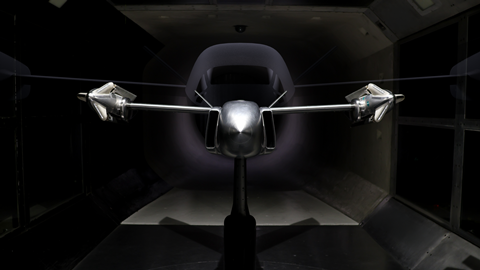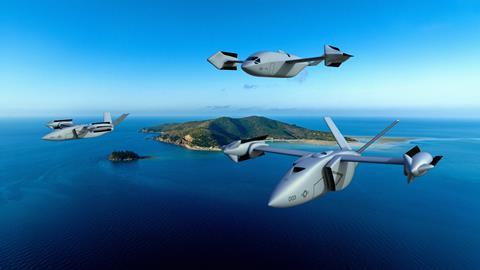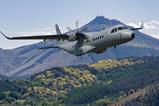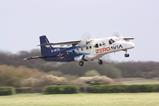Bell has completed windtunnel tests of the Stop/Fold rotor system it is developing for a future high-speed runway-independent aircraft under a US Department of Defense-backed project.
Conducted at the National Institute for Aviation Research at Wichita State University, the testing “validated the stability and control of the aircraft through the rotor fold and unfold sequence in flight”, says Bell.

It builds on previous evaluations of the system in 2023 using a high-speed test sled at Holloman AFB in New Mexico.
“Together, these two critical risk reduction tests prove the concept is ready to move ahead into a flight demonstration as part of the DARPA SPRINT programme,” says Bell; the project is currently in phase 1B.
SPRINT – or Speed and Runway Independent Technology – is a joint Defense Advanced Research Projects Agency (DARPA)/US Special Operations Command effort to design, build and fly an X-Plane to demonstrate the technologies needed “for a transformational combination of aircraft speed and runway independence for the next generation of air mobility and air combat platforms”.
“Runway independence” is Pentagon-speak for a platform not bound by the physical and logistical constraints of a conventional take-off and landing aircraft. Examples of existing fixed-wing aircraft considered runway independent include the vertical-take-off-and-landing (VTOL) Bell-Boeing V-22 Osprey tiltrotor and the short take-off and vertical landing Lockheed Martin F-35B.
DARPA is targeting aircraft that can cruise at 400-450kt (740-833km/h) and still hover in austere environments from unprepared surfaces.
Bell says the “scalable” Stop/Fold configurations “combine modern jet speed with runway independence”. It was selected for Phase 1B of the programme in May this year alongside a rival offer from Aurora Flight Sciences, which is proposing a fan-in-wing concept.
DARPA says the pair have around 12 months from that date to complete the preliminary design work on their aircraft.
































